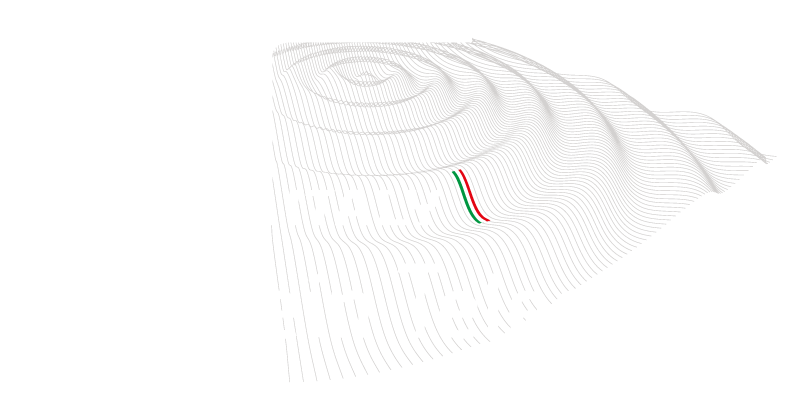On March 20, Minister of University and Research Anna Maria Bernini paid a visit to the former Sos Enattos mine in the Nuoro area of Sardinia, where she was greeted by a large and warm participation of the local community, with representatives from institutions, civil society and staff of the mine candidate to host the Einstein Telescope science project.
The Einstein Telescope will be the large research infrastructure for the next-generation gravitational wave detector, recognized by the roadmap of ESFRI, The European Strategy Forum for Research Infrastructures, as a strategic infrastructure at the European level.
“The Einstein Telescope is an opportunity not to be missed for Sardinia and for Italy. The former mine of Sos Enattos, which I had the great pleasure of visiting, is the perfect site to host the infrastructure and to become a reference point for the international scientific research,” comments Minister Anna Maria Bernini. “The government strongly believes in our country’s candidacy and has made the Einstein Telescope a priority from the very beginning. We can boast a long scientific tradition that has already led to the construction of infrastructures such as the underground laboratories of the Gran Sasso or the installation in Tuscany of the Virgo detector, until now the only laboratory in Europe dedicated to the study of gravitational waves. We have history of excellence, we have the area of the former mine: Lula can become a great place for science,” the minister concluded.
In the international scenario, the Sardinian site currently competes with another site identified in the border region between the Netherlands, Belgium and Germany. The candidacy of the Sardinian site can count as strengths on the characteristics of the area, which guarantee the very low levels of seismic and anthropogenic noise that Einstein Telescope needs, on the broad scientific and institutional consensus at national and local levels, and on the expertise of the Italian scientific community, thanks to the excellence of the research institutes and universities participating in the project, and thanks to the tradition in gravitational wave research, in which INFN has been a protagonist for more than four decades.
“We would like to thank Minister Bernini for her visit in Sos Enattos and for the determination with which the she is supporting the Einstein Telescope: it is fundamental for the scientific community, and also for society and for the local institutions that believe in the project in Sardinia,” comments Antonio Zoccoli, president of INFN. “The Italian candidature is strong: it can count on high scientific expertise and on a site that is ideal for ET and unique in Europe. On the other hand, we know that these great international challenges are not only played out on a scientific and technical level, but also on an institutional and political one, and they can only be won by working as a team, as we are doing. It will not be easy, the competition will be tough, but we know that when Italy teams up, we can succeed,” Zoccoli concludes.
Currently, the former Sos Enattos mine hosts the SAR-GRAV laboratory, financed by the Region of Sardinia and created under a Programme Agreement between the Region of Sardinia, the INFN, the INGV National Institute forGeophysics and Volcanology, the University of Sassari, the University of Cagliari, and IGEA spa, the company that runs the mine.
“From the very first moment, we decided to bet on a major investment, to build the world’s largest gravitational wave detector in Lula, which for the next thirty years will have the unique feature of attracting the world’s scientific communities to Sardinia,” emphasises the President of the Region of Sardinia, Christian Solinas. “An attractor that is no longer only linked to the economy of the coasts, but one that is able to give back to the inland areas the image of a favourable ecosystem for investment in terms of research, innovation, and development. The Region, the State and the local communities will each do their part, both in terms of resources and of any acts that may be necessary, to ensure that Sardinia consolidates its image as an ideal location for investment in high technology,” Solinas concludes.

